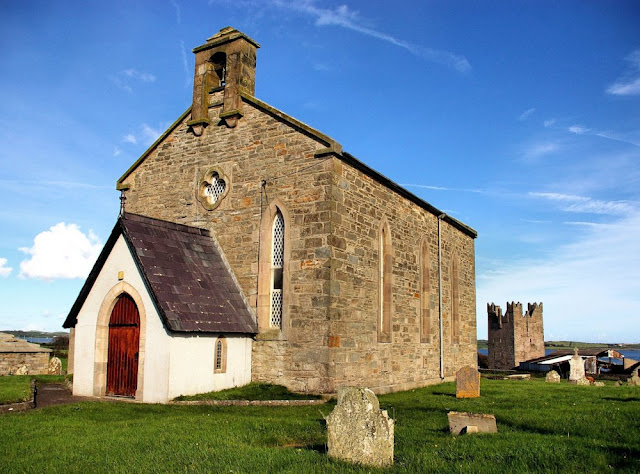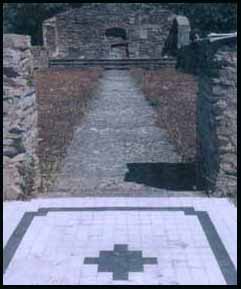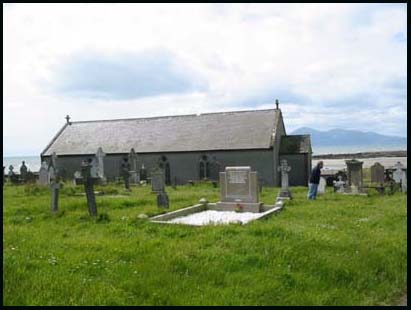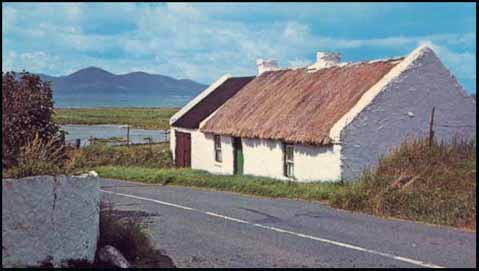|
Ros
Davies' Co.
Down, Northern Ireland Family History Research Site
© Rosalind Davies 2001 Permission granted to reprint research for non-profit use only |
Kilclief Parish
| Parish Church & Norman Castle | Ballywooden Catholic Church | Rossglass Catholic Church | Rossglass townland |
 |
Church of Ireland &
Norman Castle postal address Shore Rd, Strangford The place name is derived from the Irish cill cleithe or wattle or timber church. It is believed that this church occupies the site of a Patrician monastery foundation from ancient Christian times. If that is so then people have met to worship here for more than 1500 years. The old church on this site was in ruins in 1622, possibly destroyed deliberately, The church shown above is comparatively modern , having been built in 1839 and restored recently. It replaced a very old Catholic church which was a ruin in 1622 and which was described in 1836 as "in greatly need of repair". A portion of the wall still remains.It contained 12 seats which held 10 people each. Embedded in the southern and western walls of the 'new' church are two antique stones curiously carved. One containing 6 figures much worn by time and the other, which is more completely effaced, containing 2 or 3 of the same kind. The Anglo-Norman grave slabs on display in the porch today provide a link with the past. The castle is said to date from 1111 AD which is inscribed over a window but from the style of architecture it was probably erected in the early part of the 14th century and known to have been inhabited by a Bishop of Down early in the 15th. It was used as a store and a barn in 1836 and was roofed and floored for that purpose and is still today. The original roof of the lower floor being vaulted, still remains perfect. The castle forms a high square tower. Above the roof and at each of its corners there is a turret which may be surmounted by a staircase. A covered communication formerly existed between the castle and church. In one of the rooms over a window (which is now boarded up) some indistinct carving may be seen, apparently representing armorial bearings. |
| This photo was kindly sent by Bill Haggan. It shows the Church of Ireland with the old Norman Castle to its rear. |
|
The Glebe House, near Strangford,
which was built in 1816 by the Board of First Fruits at a cost of £500,
was burnt by IRA in 1916. The rector in 1830 was Rev. Henry Leslie.
Electricity was installed in 1954, a gift of Mrs A. Johnston of tully
in memory of her father , Alfred. Records available: baptisms from 1880, marriages from 1845 & burials from 1870;UHF have baptisms 1860 -1900 & marriages 1845-1900; graveyard attached, gravestone inscriptions available UHF Vol 8 ;oldest stone 1752; used by all denominations; email me for a gravestone look-up |
| References;V17 p78 OSM; LWAG p45; GIC; BB p 8; O'L V1 p 207; Inv 2001 p 33, 38 & Inv 2006 p16,49, 40;FR; LM 1988 p17-21; LM 1995 p23 (inside drawing); LR 2009 p78-79 |
 |
|
 |
|
 |
|
by Ros Davies